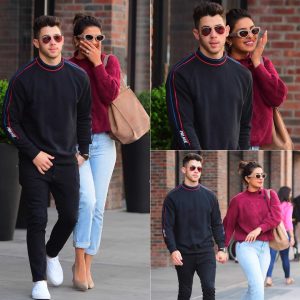The Hollywood Reporter (THR) condemned country music star Jason Aldean’s “Try That in a Small Town” and quoted academics accusing it of spreading division and racism.
Aldean became a national figure after he released a music video for his song, “Try That in a Small Town,” that included authentic news footage of rioters, looters, and violence in 2020 after the death of George Floyd.
In the song, the country singer warned such activity would not be tolerated in rural America.
CMT responded by pulling the music video from circulation on their network.
THR published a piece on Wednesday, “How Jason Aldean Cynically Built ‘Small Town’ to Appeal to Trump Country,” noting that some have blasted the song as “a pro-lynching anthem and anti-Black.”THR quoted Hunter College music theory professor Philip Ewell arguing the song is part of a phenomenon of subtle yet unmistakable “anti-Blackness” amid America’s cultural divide.
“Right now, in 2023, we’re having these massive disagreements about race and what role it’s played in the history of our country. And in music, it plays out in these extremely subtle ways sometimes. It’s hard to deny some of these embedded stereotypes,” Ewell told THR. “I’ve listened to some of Jason Aldean’s music — I think he’s a pretty good artist. But it’s just something that kind of comes out in culture, anti-Blackness. Because it’s part of the founding of our country. We shouldn’t run away from that simple fact.”

A music theory argued Jason Aldean’s song is part of a phenomenon of subtle yet unmistakable “anti-Blackness” amid America’s cultural divide.
He claimed that lyrics such as “pull a gun on the owner of a liquor store” have an implicitly anti-Black message in particular, adding, “Anybody really should understand that there’s a strong racial undertone to these lyrics.”
“Someone’s robbing a liquor store — in the American psyche, the person who’s doing that without saying it is a Black person, right? It’s just in our minds. It’s supposed to be that way,” Ewell argued. “And when you paint that picture in someone’s mind of someone pulling a gun on an owner of a liquor store, the person pulling the gun is Black. The owner of a liquor store is probably Asian or maybe white. And there are these racial stereotypes that play out in lyrics like this.”
The same piece quoted country music historian and Belmont University professor Don Cusic warning that there were “coded” racial messages in the footage, regardless of whether rioters of multiple races were shown.

“Try That in a Small Town” included authentic news footage of rioters, looters, and violence in 2020 after the death of George Floyd.

A country music historian and professor said that there were “coded” racial messages in the music video.
“What upsets people is the coded language and coded pictures. You got a guy with a hoodie in a violent act, but it could have been a white guy; white guys wear hoodies too. But the implications go far beyond. And if you’re Black, you’re looking at that video a whole lot differently than if you’re white,” Cusic suggested. “And that’s the dividing factor.”
He went on to theorize that Aldean or the production company were deliberately subtle, yet purposeful, with their messaging.
“Even though I think Aldean was careful, or the production company was careful to have whites in pictures of riots as well as implying Blacks as part of the division in this country, people in the metropolitan areas are looking at it differently than the rural areas,” Cusic theorized. “People who are Trump supporters are looking at it a lot differently than intelligentsia.”
“They knew what they were doing,” Cusic argued, later adding, “There’s a giant wall in this country now — division. And instead of taking some of the bricks off the top of the wall, I think Aldean added some bricks to that wall, or at least the video did.”
Culture commentator Christian Toto of Hollywood in Toto rejected such claims to Fox News Digital, saying his song simply reflects the feelings of many across the country.
“‘Try That in a Small Town’ speaks to a budding frustration that law and order is no longer part of American culture, witness the Defund the Police movement and lenient prosecutors in many big cities,” he said. “Many Americans haven’t forgotten the violent aspects of recent social justice protests and how the media framed them as ‘mostly peaceful.’”

Aldean or the production company were deliberately subtle, yet purposeful, with their messaging, a professor claimed.Amy Harris/Invision/AP
“Aldean may agree with the lyrics’ message, or they may be him channeling the frustrations of hard-working Americans who lead lawful lives and hate seeing their neighborhood burn. He deserves the creative space to pursue either goal, and art is often a way to spark debate,” Toto said, defending Aldean’s artistic license to explore these ideas.
“It’s hardly the first song to celebrate or glorify violence,” he continued, dismissing the idea of racist coding in the song or video. “Plus, the violent protests in question were multicultural in nature. Antifa’s membership appears primarily White, based on news reports, while many White Americans joined BLM protests in their communities, both peaceful and violent.”
Toto blasted THR, saying that outlet and others were not assessing Aldean’s work in a non-biased, good faith way.
“The entertainment media is as relentlessly biased to the left as the news media,” he said. “It’s no surprise Hollywood reporters would frame the story this way, ignoring the violent nature of many progressive protests and shaming Aldean, a straight White country superstar, for daring to bring up the subject.”





